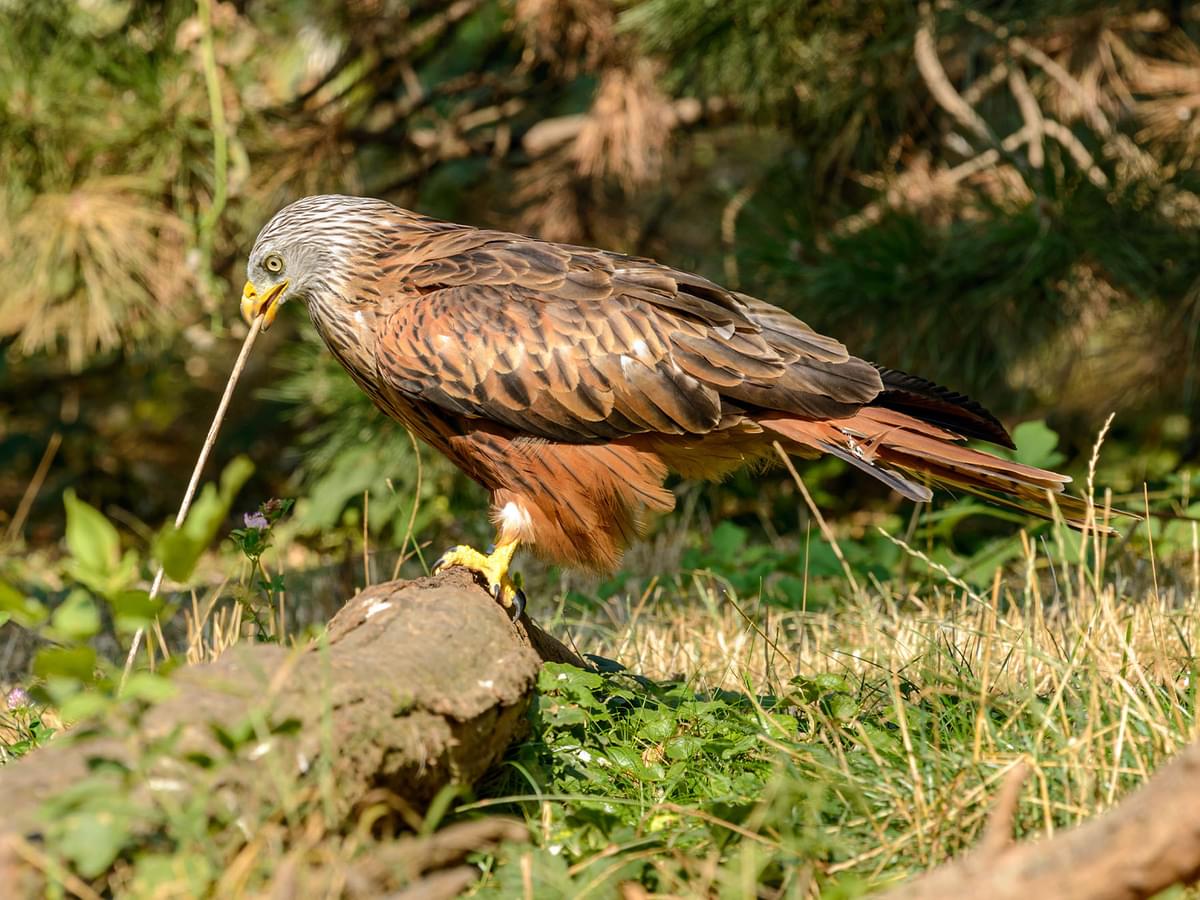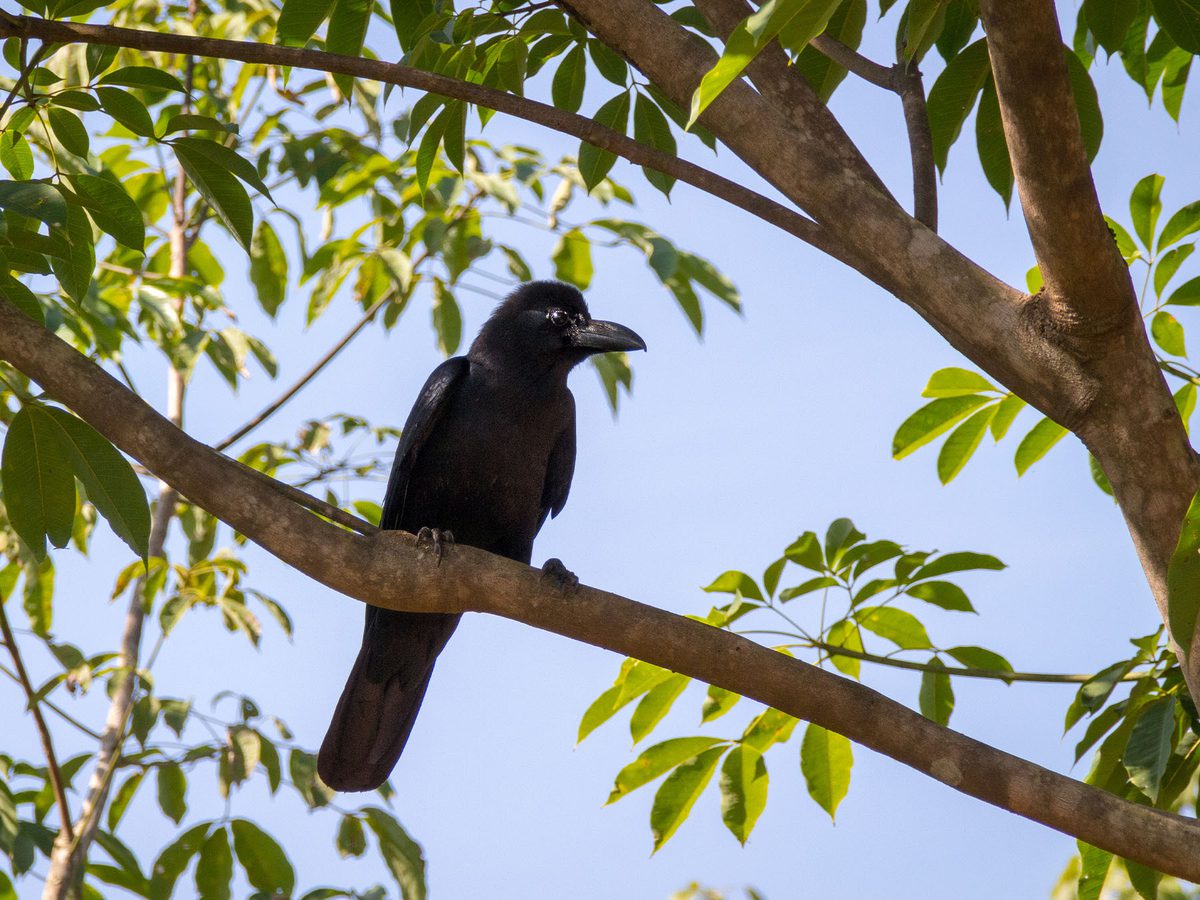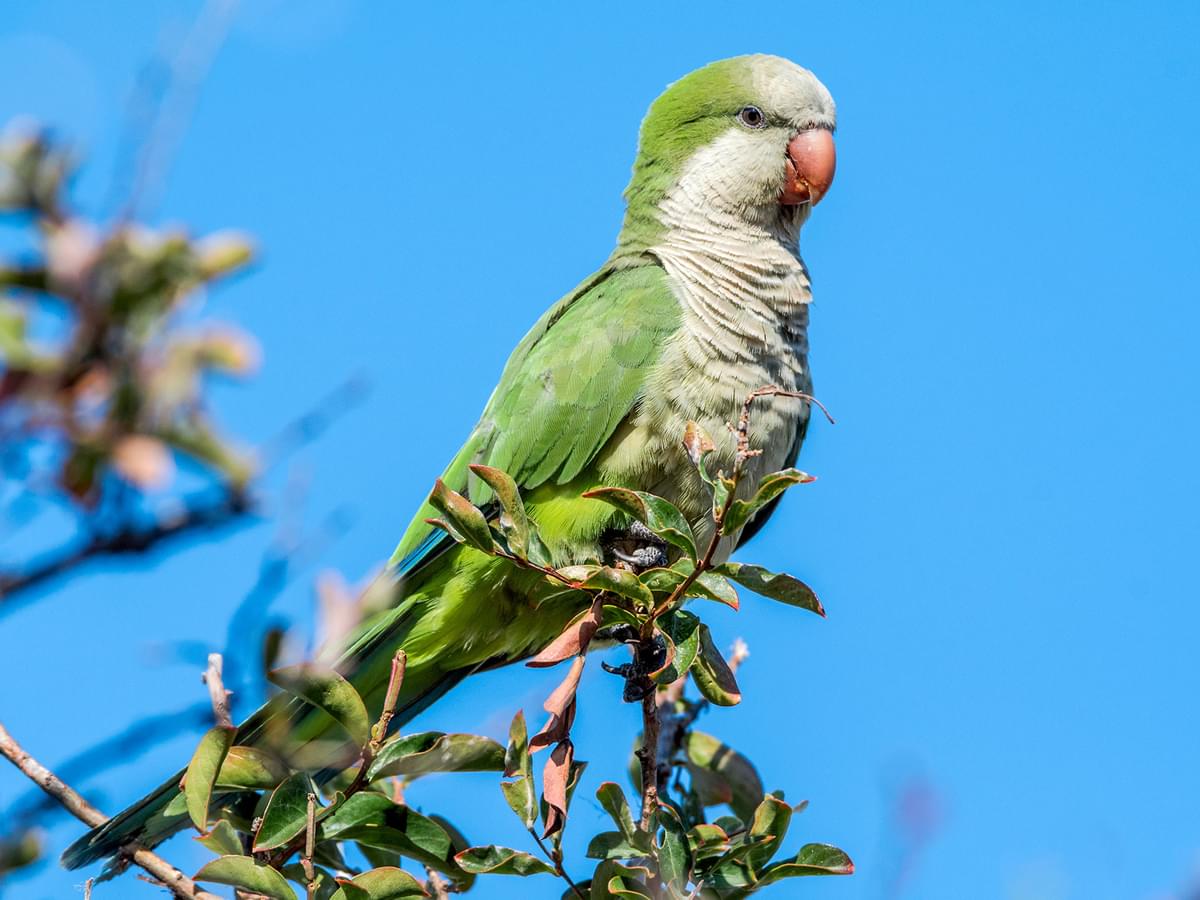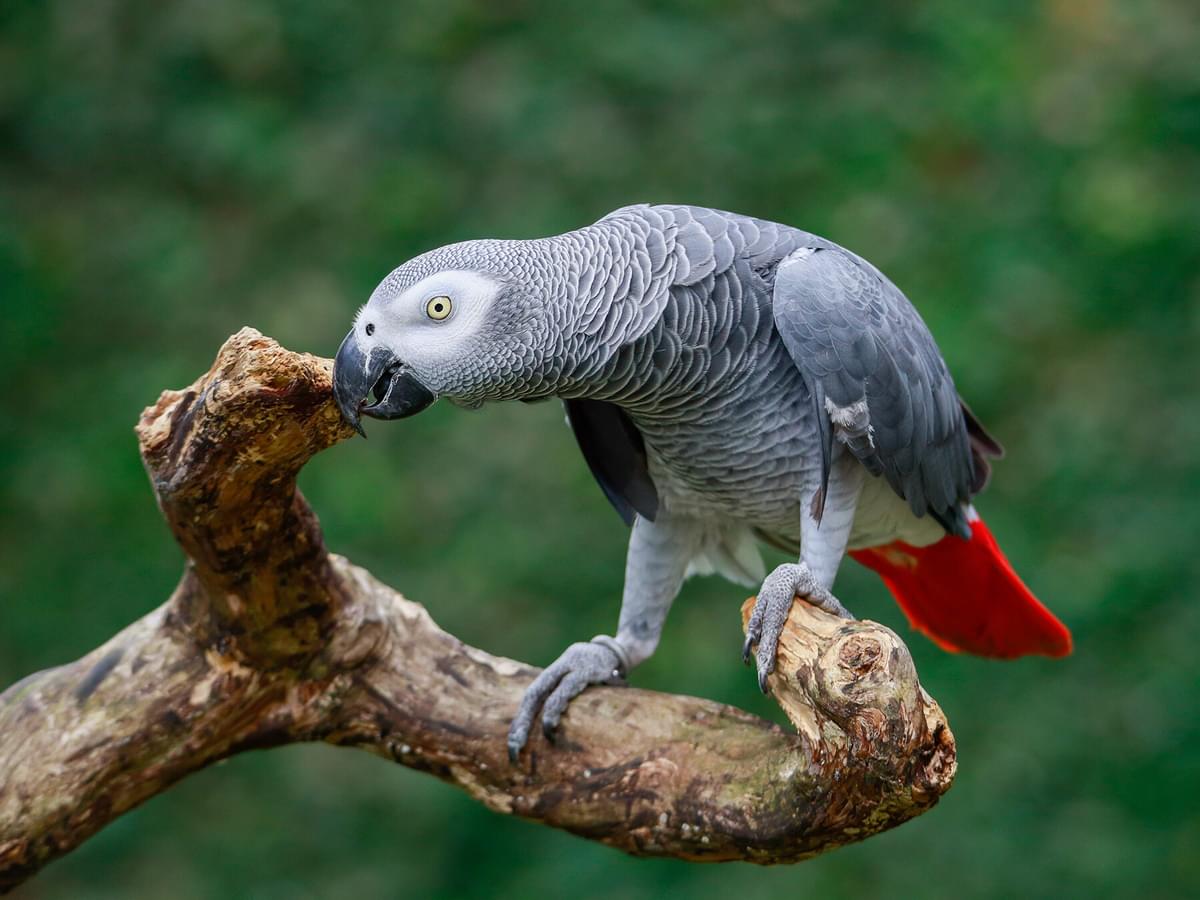Tool Use in Feeding

Craftiness in Feathers
We don’t often associate birds with intelligence, but you might be surprised to learn that several species are known to use tools when feeding. While birds’ bills and feet are often highly developed for feeding and foraging, some tricky tasks require the use of tools.
From spears and hooks to crowbars and combs, birds use external objects as tools for a variety of tasks. Innovative tool use is especially well-studied in intelligent bird groups like the corvids, although some of the best examples of regular tool use in the wild come from some relatively small and non-descript songbirds.
In this guide, we’ll uncover the fascinating world of tool use in birds. Read along to learn which birds use tools and why!
Understanding Tool Use in Birds
Defining Tool Use
Birds use foreign materials in many remarkable ways. Perhaps the most common example is the bird’s nest, which can be a highly complex and intricately built structure. However, many creatures, including invertebrates, fish, and mammals, manipulate foreign materials to construct nests.
So, what exactly is tool use in the context of birds?
Tool use generally involves using a foreign object, either manufactured or collected, as an extension of the bird's body or to influence their surroundings or prey. This behavior is seen in several wild birds in natural scenarios, but also in experimental situations in laboratory settings.
Continue reading to learn about some tool using birds.

Pictured: An Asian Golden Weaver building its nest
Examples of Tool-Using Birds
Crows and Ravens
Several birds from the corvid family have been observed using tools, including Crows, Ravens, Rooks, Jackdaws, and Jays. These birds are masters of problem-solving, which partially explains how readily they adapt to using tools in scientific experiments.
Several species have been observed using tools in the wild, although the New Caledonian Crow (Corvus moneduloides) is one of the best-known examples. These small crows have learned to extract wood-boring grubs using a stick tool. They fashion their own tools and may use the same ones over and over again.
Ravens (Corvus corax) use tools less regularly in the wild, although they have been recorded throwing small objects at humans and even dropping things on nesting seabirds to access their eggs. These intelligent birds also use bait to attract potential prey, ants to preen their plumage, and water to soak dry food.

Several species have been observed using tools in the wild, although the New Caledonian Crow (pictured) is one of the best-known examples
Woodpecker Finches
The small, non-descript Woodpecker Finch (Camarhynchus pallidus) lives on the Galapagos Islands of the Pacific Ocean, hundreds of miles off the coast of Ecuador. These omnivores are famed for their tool use when hunting woodboring insects.
Woodpecker Finches collect and sometimes modify twigs or cactus spines to extract grubs from tunnels or crevices. However, they don’t all use tools, and some researchers suggest that rather than learning this behavior from other individuals, they may master the art through a process of trial and error.
Woodpeckers
Unlike the passerine described above, true Woodpeckers of the Picidae family have long, specialized tongues for extracting their food. However, these unique birds use foreign objects for communication.
Woodpeckers frequently drum on resonant objects like hollow tree trunks and gutters to attract a mate or advertise their territory. In this way, they are using an external object as a tool rather than relying on their own voice.

Pictured: A Woodpecker Finch. Woodpecker Finches collect and sometimes modify twigs or cactus spines to extract grubs from tunnels or crevices

Pictured: A Great Spotted Woodpecker. True Woodpeckers of the Picidae family have long, specialized tongues for extracting their food
Parrots and Relatives
Several species from the parrot family have been observed using feathers and other objects to preen themselves. In one fascinating study, the authors describe a disabled Kea (Nestor notabilis) who regularly uses pebbles as a tool for preening.
Recent research has also shown an Indonesian parrot, the Goffin’s Cockatoo (Cacatua goffiniana), to use tools in captivity when extracting the seeds of a wild fruit.
Other examples of tool use:
- The Brown-headed Nuthatch (Sitta pusilla) uses bits of bark scale to lever open the bark of trees while searching for hiding invertebrates.
- Striated (Butorides striata) and Green Herons (B. virescens) use bait to lure fish up to the surface where they can be caught.
- Egyptian Vultures (Neophron percnopterus) throw rocks onto eggs to crack their shells.
- Several species of birds are known to use ants as a tool for preening their feathers. They hold ants in their bill and rub them through their plumage to release parasite-repelling formic acid.
Cognitive Implications of Tool Use
Intelligence and Problem Solving
Tool use typically correlates with larger brain size, so it’s no surprise that the most industrious displays of tool use are seen in the crow and parrot families, the two most intelligent groups of birds.
Experiments with Cockatoos, Crows, and Ravens display some impressive examples of tool manufacturing and complex tool use requiring a sequence of behaviors for a food reward.
This shows that tool use isn’t just an instinctual trick that some birds have evolved but often a problem-solving behavior that can be learned and applied to novel situations.

Pictured: A Hyacinth Macaw. Tool use typically correlates with larger brain size, so it’s no surprise that the most industrious displays of tool use are seen in the crow and parrot families
Tool Use and Evolution
Adaptation and Learning
The evolution of tool use in birds may stem from other behaviors, such as food caching in corvids or food wedging in Nuthatches.
However, many of the fascinating tool-use scenarios recorded in captivity are unknown in the wild, which might indicate that they were useful at some earlier time in evolutionary history or simply highlight the innovative abilities of some avians.
Tool use in birds cannot be explained as simply an evolved behavior or a learned skill, as it may combine elements of both. Intelligent species like the New Caledonian Crow inherit a knack for tool use from their parents, but they also use their own problem-solving abilities to use tools in novel ways.
Human Observations and Studies
Studying Avian Intelligence
Researchers have studied tool use in birds both by observing their natural behavior in the wild and designing clever experiments under controlled conditions. Many striking displays of avian intelligence have been observed when birds solve problems for a food reward. Tool-using corvids and parrots have even been shown to use tools to access other tools, highlighting their forward-thinking abilities.
Tool use for a food reward is a typical example of instrumental or operant conditioning, but studies have also shown that tool-using birds use other forms of learning. New Caledonian Crows, for example, may be using social learning to develop their tool-building skills. Evidence for this lies in the fact that wild individuals from localized areas tend to fashion similar tools.
A 2014 study on Goffin’s Cockatoos in a controlled environment has provided good evidence that birds can, indeed, learn to use tools by observing others. In this scenario, Cockatoos that had never used tools before imitated an experienced tool user and quickly learned to use and even create their own tools.

It is believed that Carrion Crows in Japan drop nuts in front of cars to break them open
Summary
From crafty Crows to fishing Herons, birds display some remarkable tool-use abilities for feeding, grooming, and attracting a mate. More than just finding a suitable object, some species seek out the material they need and then fashion it into a tool of the ideal size and shape!
Scientists are still uncovering new insights into avian tool use, and many fascinating examples in nature may be going unnoticed or unreported.
There’s a lot that birdwatchers and casual observers can still uncover about the fascinating secrets of bird behavior, so we should all keep our eyes open for more examples of tool-using birds!

